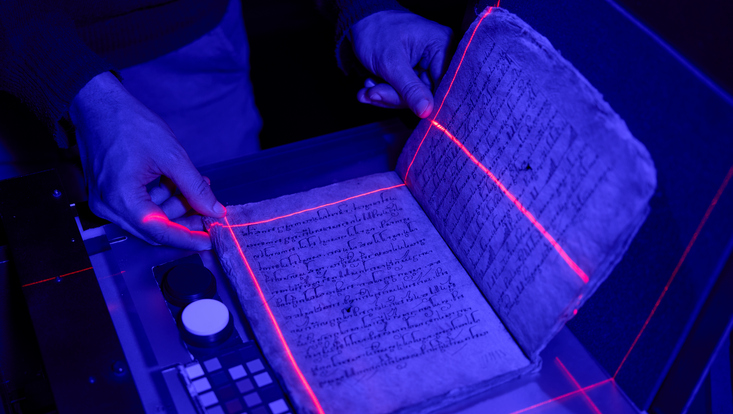About Us

At the Centre for the Study of Manuscript Cultures (CSMC) and its Cluster of Excellence ‘Understanding Written Artefacts’ (UWA), we study writing as one of humankind’s central cultural techniques. Spanning eras and regions, we focus on the question of how people in different writing cultures around the world have produced, used, revised, passed on, and preserved written artefacts from the beginnings of writing to the present day.
The overarching goal of our research is to develop a global perspective on the history of handwriting. Our researchers ask how different societies produced and used manuscripts, what function and status they were given, and what similarities and differences can be found worldwide in the handling of written artefacts. Rather than placing Europe at the centre, we are particularly interested in Asia and Africa, regions whose written traditions are of outstanding importance for understanding human history but which have often been marginalised in the past.
The starting point for our investigations is the physical objects themselves, whether it is an inscribed clay tablet, a papyrus scroll, an illustrated codex, an engraved metal plate, or a palm leaf manuscript. Our scholars study not only the contents of texts, but also the biographies of objects: How and from what materials were written artefacts produced? How were they used, why, and for what purposes were they modified? How were they archived and transmitted? Through this material-centred approach, we deepen our understanding of the significance of manuscript culture in various historical and cultural contexts.
The holistic study of written artefacts requires the collaboration of researchers from the humanities, natural sciences, and computer science. A fundamental characteristic of the CSMC is therefore its consistently interdisciplinary approach. Scholars from diverse fields in the humanities work together with experts in areas such as microbiology, X-ray physics, archaeometry, and computer vision. In our artefact laboratories, we are developing innovative, non-destructive, and mobile analytical methods to study written artefacts worldwide using state-of-the-art technology. With these methods, we aim not only to advance research, but also to contribute to the preservation of written cultural heritage.
The study of written artefacts has gradually developed into a central research focus at the University of Hamburg. Originating from a DFG-funded research group (2008–2011), it grew into a ‘Sonderforschungsbereich’ (SFB950) with two successful funding phases (2012–2019). Today, the majority of our research is concentrated in the Cluster of Excellence ‘Understanding Written Artefacts’ (UWA), which will be funded at least until 2032. This development was made possible through the collaboration of the numerous ‘small disciplines’ within the humanities at the University of Hamburg. The networking of these disciplines has made the CSMC one of the few institutions worldwide in which radically different disciplinary perspectives in the study of written artefacts are brought together under one roof to jointly develop an understanding of their role in the development of human societies — and their impact in shaping our lives in the digital age.
